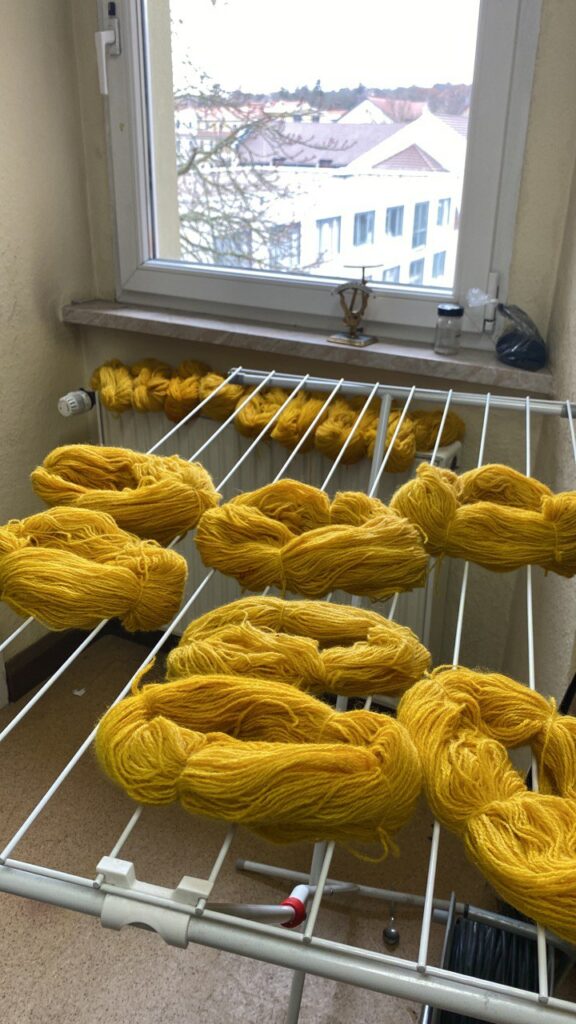
My thoughts on crying in an artistic context, aka artist practice which I define as “artistic crying” culminate in my textile piece “A souvenir of a day in the country with you”. Which I started creating because of my manifested thoughts during “Crying Institute”.
The idea of a universal pain that we all share is a central theme throughout the piece, and the responsibility of mending it is a recurring motif that runs throughout it.
As a work of art, “A Souvenir of a Day in the Country with You” not only invites viewers to reflect on their own experiences of pain and how art can help to heal these wounds, by clearly stating “You inspire me“, “I want to mend your pain“ but it also indirectly delves into the idea of pain within the artistic practice itself. The process of creating these textile carpets is not only physically demanding and time-consuming, particularly in this case because every carpet of the series aims for more complexity in production (in this case: naturally dyeing the fibers, which included collecting 20kg of red onions for example), but it is also emotionally challenging due to the historical dismissal of textile art as a legitimate form of artistic expression. The pattern used in “A Souvenir of a Day in the Country with You” is a direct reference to one of Gunta Stölzl’s woven carpet drafts, which is not only painful because of its’ transfomation into tufted pattern but also because of the dismissal of textiles as a legitimate artistic medium. Historically, textile art has been undervalued and relegated to the realm of craft rather than art. This dismissal of textile art was particularly evident in the Bauhaus movement, where textile artists such as Gunta Stölzl were marginalized and their work was often dismissed as “women’s work.”

Using an old amateur photograph of two women kissing further emphasizes the idea of reclaiming and reinterpreting history. By taking an image that was likely dismissed or hidden away by society and transforming it into a work of art, I am trying to subvert societal norms and celebrate the beauty of diversity and individuality.
The inclusion of this design element within “A Souvenir of a Day in the Country with You” speaks to the power of art to challenge and reshape societal expectations and norms. Or the pain of not being able to do so, as queer and female artists are still marginalized or only used for queering art institutions and polishing their diverse images.
Lastly, this carpet was also inspired by a very personal encounter. And tries to keepsake it.
Through the fusion of different ideas of pain and artistic expression, “A Souvenir of a Day in the Country with You” offers a unique and deeply moving perspective on the role of art in our lives.
“A Souvenir of a Day in the Country with You” serves as a powerful reminder of the importance of recognizing and embracing the full spectrum of human experience and artistic practice.


